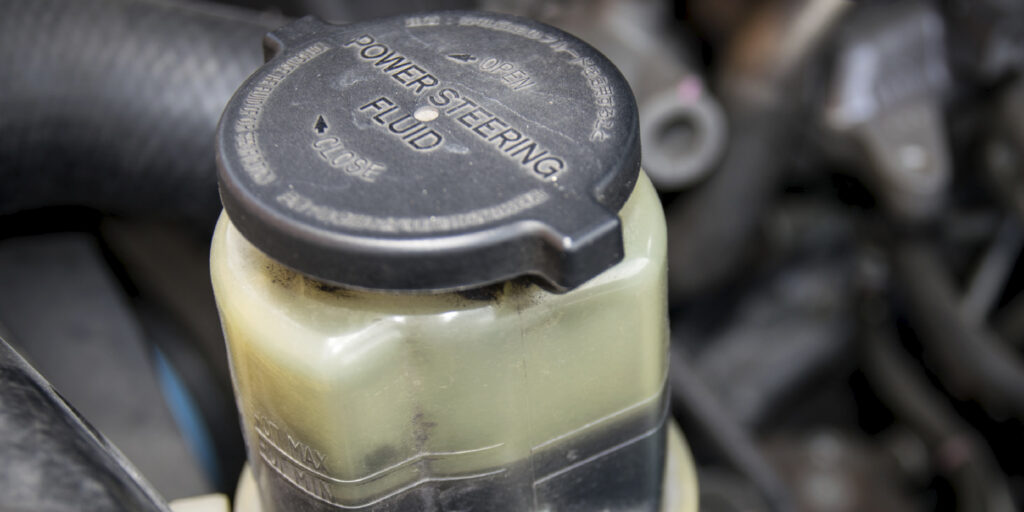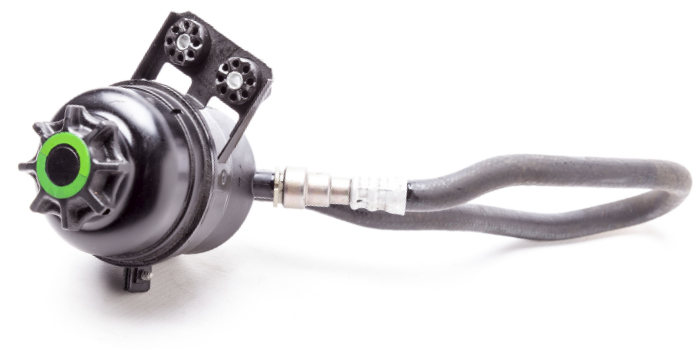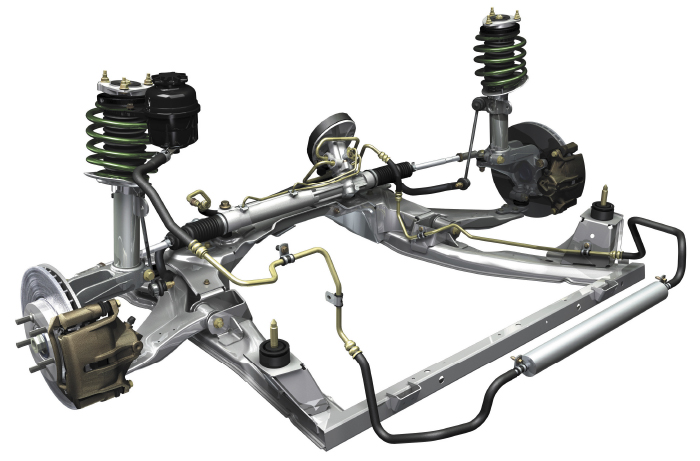The first part of any power steering inspection should be to inspect the fluid. If the fluid is grey or black, it could be a sign that the inner layers of the hose have been compromised by worn, degraded or incorrect fluid. This type of discoloration is caused by rubber or metal particles in the fluid.
TYPES OF POWER STEERING HOSES
There are two general categories with power steering hoses: high- and low-pressure. High-pressure power steering hoses can have as many as five layers to handle up to 1,500 psi. The inner layers are resistant to the fluid and seal it against permeation into the outer layers.
The next inner layer is designed to give the hose strength against high pressure. These layers can be made of high-tech polymer materials and fabrics. The outer layer of these power steering hoses is designed to protect the inner layers against abrasion, chemicals and heat.
Low-pressure power steering hoses are designed with fewer layers and made to withstand less pressure. But, they must have the same resistance to elements found in the engine bay.
High-pressure power steering hose assemblies should use a hose that meets or exceeds SAE J2050. This standard test puts the power steering hoses and also the fittings through a torture test ranging from 40 to 150 °C (-40 to 302 °F) and 1,500 psi maximum working pressure. Low-pressure/return hoses should be of the SAE J189 or J188 variety. This type of hose has to endure the same temperature range as the SAE 2050 hose, but is tested only to 250 psi.
It is highly recommended if a high-pressure hose is replaced, that the low-pressure hose also be replaced.
WHAT CAUSES POWER STEERING HOSES TO FAIL?
The life of power steering hoses is not easy. Power steering hoses must endure some of the highest pressures and temperatures under the hood. Coupled with ozone, oil and solvents attacking the outer layers of these components, it is easy to see why some hoses fail.
Power steering fluid can be flammable. When it ignites, it is very difficult to extinguish. Inspection of the lines is very important and any leaks should not be taken lightly, as the loss of power steering can cause an accident.
POWER STEERING HOSES: START AT THE RESERVOIR
As we discussed earlier, a key part of any power steering inspection is fluid inspection. Discolored fluid can be an indicator that the inner hose layers have been severely degraded by rubber or metal particles in the fluid.
High-temperature pulsations cause power steering hoses to deteriorate from the inside. The constant flexing and pressure surges result in the breaking off of small particles of hose, which are carried through the system and can lead to system malfunction.
When performing an inspection of power steering hoses, any imperfection on the outside should be carefully inspected for the following signs:
Abrasion: If the outer layers of power steering hoses show any physical damage, they should be carefully inspected. If the outer layers are damaged, the inner layers of the hose could be exposed to damaging chemicals, heat and ozone. If there is damage to the power steering hose, investigate how it was damaged. Worn motor mounts, missing mounting tabs and exhaust gasket leaks can damage power steering hoses.
Bulges: Any bulges on power steering hoses are a sign that the internal layers have failed, fluid is working between the layers, and complete failure is imminent.
Softness: If a hose feels soft in an area, it is a sign that the internal or external layers are breaking down.
Cracking and Flaking: If a power steering hose’s outer layer is cracking or flaking, it is an early sign of internal wear, and the hose has lost its ability to absorb pressure surges.
Corrosion: Extreme corrosion on the fittings can cause the power steering hose assembly to fail. Most fittings are covered with corrosion-resistant coatings and plating methods. If they are removed due to abrasion, solvents or other processes, the fitting will eventually fail.
Leaks: Power steering fluid does not magically disappear. Any leak in a hose assembly is a problem that should be addressed.
Installation
Be sure to use the correct fasteners. Low pressure or return lines are typically held on with constant tension hose clamps or spring clamps. Using a worm drive-style clamp may result in a leak as the hose material compresses. Return hoses may have to go from the rack to the reservoir. The routing of the hose is not an accident; this is why many OEMs use molded hose assemblies.
Removing high-pressure lines on high-mileage vehicles can be difficult due to corrosion. The banjo fittings can become seized around the bolt. When you try to loosen the bolt, it will snap off. Also, some inverted flare fittings can seize around the lines and twist the tubing like a piece of taffy. If you have difficulty with either type of fitting, try soaking them in penetrating fluid before attempting to put a wrench to them.

















